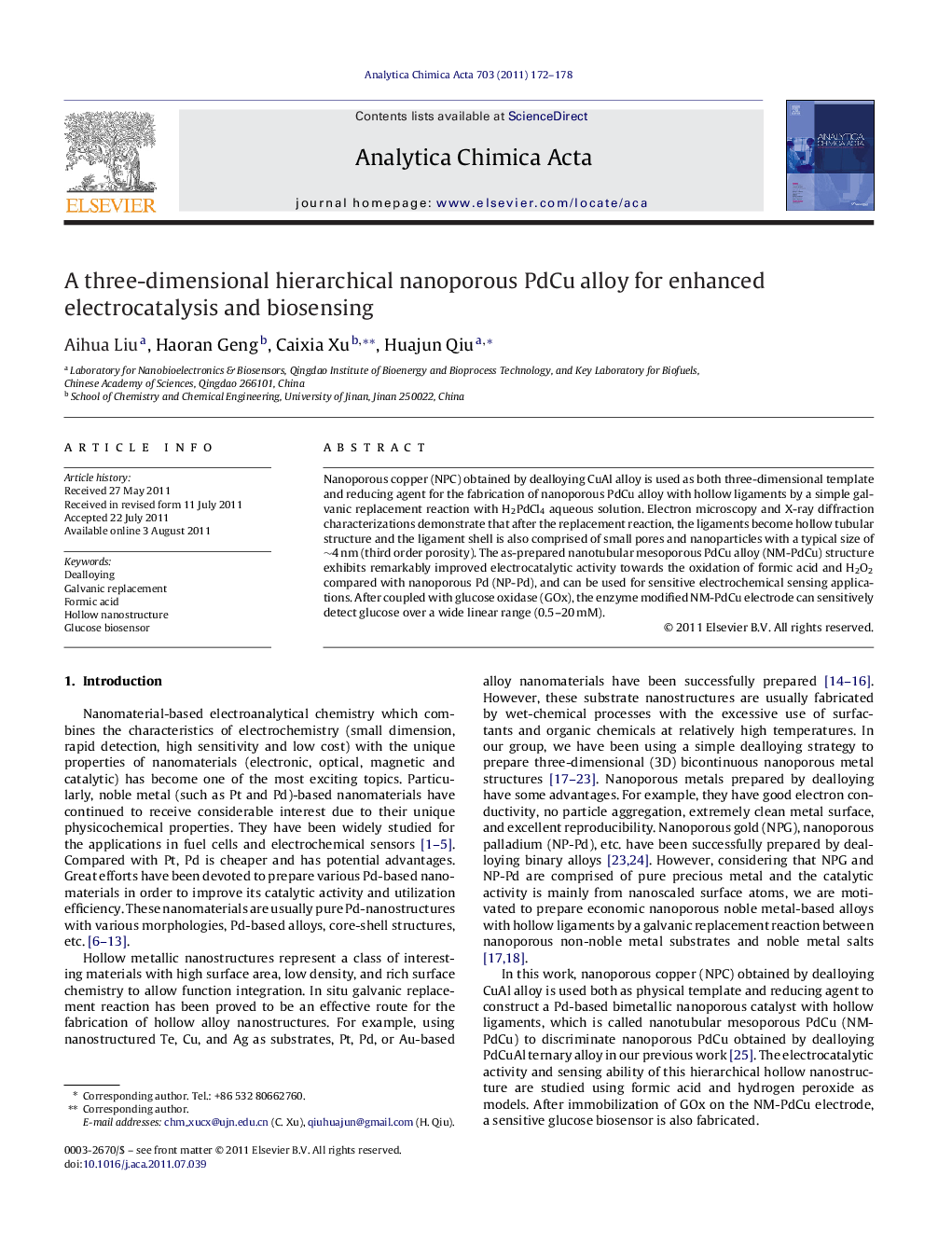| Article ID | Journal | Published Year | Pages | File Type |
|---|---|---|---|---|
| 1166719 | Analytica Chimica Acta | 2011 | 7 Pages |
Nanoporous copper (NPC) obtained by dealloying CuAl alloy is used as both three-dimensional template and reducing agent for the fabrication of nanoporous PdCu alloy with hollow ligaments by a simple galvanic replacement reaction with H2PdCl4 aqueous solution. Electron microscopy and X-ray diffraction characterizations demonstrate that after the replacement reaction, the ligaments become hollow tubular structure and the ligament shell is also comprised of small pores and nanoparticles with a typical size of ∼4 nm (third order porosity). The as-prepared nanotubular mesoporous PdCu alloy (NM-PdCu) structure exhibits remarkably improved electrocatalytic activity towards the oxidation of formic acid and H2O2 compared with nanoporous Pd (NP-Pd), and can be used for sensitive electrochemical sensing applications. After coupled with glucose oxidase (GOx), the enzyme modified NM-PdCu electrode can sensitively detect glucose over a wide linear range (0.5–20 mM).
Graphical abstractFigure optionsDownload full-size imageDownload as PowerPoint slideHighlights► Nanotubular mesoporous PdCu (NM-PdCu) alloy is facilely fabricated via one-step metal replacement reaction between nanoporous Cu and H2PdCl4. ► The NM-PdCu exhibits remarkably improved structure stability and electrocatalytic activity towards formic acid and hydrogen peroxide oxidation compared with NP-Pd. ► When coupled with GOx, the GOx/NM-PdCu electrode can be used for sensitive detection of glucose over a wide concentration range.
